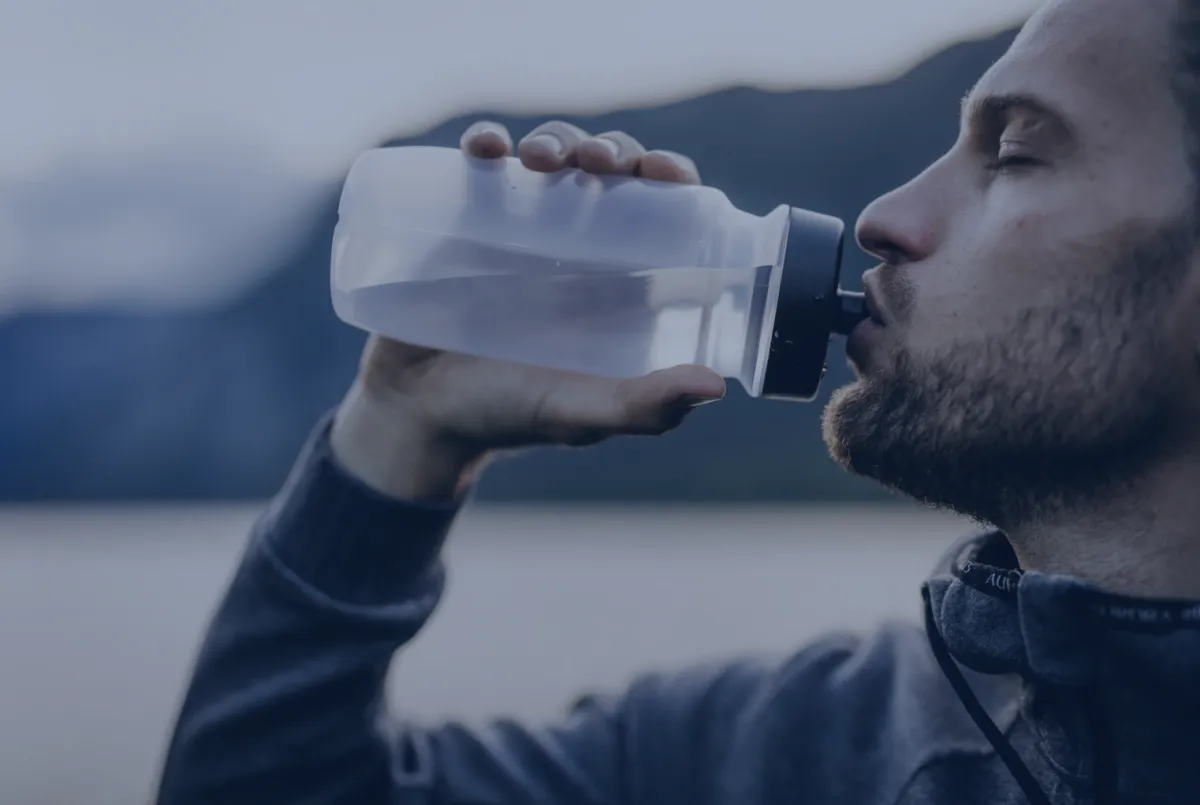Return 2 Sport
BLOG
All things running, physical therapy, strength training, mobility, and education!
Welcome to the Return 2 Sport PT blog. Here, we share insights and tips to improve your movement quality, alleviate pain and dysfunction, and equip you with the knowledge to maintain a pain-free and active lifestyle for the long haul.

Active Recovery Tips for Runners

Active Recovery Tips for Runners: Enhancing Recovery with Hydration and Nutrition

For runners, recovery is just as important as training. Pushing your body during runs—whether it’s a long-distance jog, a tempo run, or interval sprints—can leave your muscles fatigued and sore. Active recovery is key to reducing soreness, improving performance, and staying injury-free. In this article, we'll cover essential active recovery tips for runners, along with hydration and nutrition strategies to support your recovery.
What is Active Recovery?
Active recovery involves low-intensity exercise and movements that help promote blood flow and muscle repair after intense training sessions. Unlike complete rest, active recovery helps your body heal more efficiently by gently engaging your muscles without adding significant stress. This helps reduce muscle stiffness, flush out toxins, and decrease the likelihood of injury.
Active Recovery Tips for Runners
1. Light Jogging or Walking
After an intense running session, a 10-20 minute light jog or brisk walk can help your muscles cool down gradually. This allows blood to circulate better and reduces muscle stiffness the following day. If you’re coming off a race or a long run, try walking instead of jogging to avoid overexertion.
2. Cycling
Easy cycling is a fantastic way to maintain movement without the impact stress of running. A 20-30 minute low-resistance ride can loosen up tight muscles and improve circulation. Make sure to keep the intensity low—this is about recovery, not another workout.
3. Swimming
Swimming provides a full-body, low-impact workout that’s perfect for active recovery. The water’s buoyancy reduces stress on your joints and muscles while promoting circulation. Aim for 20-30 minutes of easy swimming or water jogging.
4. Mobility Work and Massage
Foam rolling, rolling sticks, and massage guns can help release tight muscles and fascia, improving flexibility and blood flow. Spend 10-15 minutes working on major muscle groups like your quads, hamstrings, and calves. Start gently especially when very sore and you can always add intensity as the tissues relax.
5. Dynamic Mobility and Yoga
Incorporating dynamic mobility exercises and yoga into your routine helps to maintain flexibility and relieve muscle tightness. Focus on dynamic stretches and exercises that improve mobility while also loading the muscles. If you can get a good stretch and activate the muscles at the same time they will recover faster. Yoga sessions designed for runners can also be a great way to promote active recovery while improving balance and flexibility.
6. Cross-Training
Incorporate low-impact activities like swimming, rowing, or elliptical workouts on your active recovery days. These exercises maintain your cardiovascular fitness while giving your running muscles a chance to recover. Be mindful not to push too hard—active recovery should feel easy.
Hydration Tips for Recovery
Hydration plays a critical role in your recovery process. Proper hydration helps maintain your body’s fluid balance, supports cellular repair, and ensures your muscles are functioning optimally.
1. Incorporate Electrolytes
When you sweat, you lose not just water but also vital electrolytes like sodium, potassium, and magnesium. These minerals are essential for muscle function and hydration. Include electrolyte-rich drinks or snacks (like bananas, oranges, or electrolyte drinks) in your recovery routine to ensure you’re replenishing what you’ve lost. Preload your body with electrolytes the night before and morning of a longer run to ensure your body has the electrolytes it needs to keep going.
2. Rehydrate Immediately Post-Run
After your run, focus on replenishing lost fluids as soon as possible. Drink water or an electrolyte-rich sports drink within 30 minutes of finishing your workout. Aim to replace 1.5 times the amount of fluid you lost during exercise to fully rehydrate. Weighing yourself before and after your run can give you a good estimate of how much fluid to replace.
3. Monitor Your Urine Color
A simple way to gauge your hydration level is by checking the color of your urine. Light yellow or clear urine typically indicates that you’re well-hydrated, while dark yellow or amber suggests dehydration. Aim to keep your urine on the lighter side throughout the day, especially on recovery days.
4. Get a Sweat Test
If you’re already taking electrolytes, that’s great, but the next step is learning exactly how much you need for different distances and conditions. Taking a sweat test will give you the information needed to learn how much sodium to take before, during, and after training. Learning the ratio of sodium to water is the key to maintaining electrolyte balance. Book a sweat test with us here.
Nutrition Tips for Recovery
Nutrition is equally important in the recovery process. Proper nutrition provides your muscles with the building blocks they need to repair and grow stronger after each run.
1. Prioritize Protein
Protein is essential for muscle repair and recovery. After a run, aim to consume a snack or meal containing 15-25 grams of protein. This can come from sources like lean meat, eggs, dairy, or plant-based options like tofu, beans, or lentils. Consider having a protein shake within 30 minutes of finishing your run for quick absorption. Aim for 1 gram of protein per pound of your ideal bodyweight.
2. Carbohydrate Replenishment
Carbohydrates are your body’s primary fuel source during exercise, and replenishing glycogen stores post-run is essential for recovery. Include complex carbs like whole grains, sweet potatoes, or fruit in your post-run meal to restore your energy levels. The combination of carbs and protein helps speed up muscle repair.
3. Healthy Fats
Omega-3 fatty acids, found in foods like salmon, chia seeds, and walnuts, have anti-inflammatory properties that can help reduce muscle soreness. Incorporating healthy fats into your diet can also support overall recovery by promoting joint health and reducing inflammation.
4. Timing Matters
The timing of your nutrition plays a crucial role in recovery. Aim to eat a balanced meal or snack within 30-60 minutes after your run. This is when your muscles are most receptive to nutrients, making it the ideal time to refuel with a combination of protein and carbohydrates.
5. Anti-Inflammatory Foods
Incorporating anti-inflammatory foods like berries, leafy greens, turmeric, and ginger can help reduce inflammation and support muscle recovery. These foods are rich in antioxidants and nutrients that combat oxidative stress caused by intense exercise.
Conclusion
Active recovery, combined with proper hydration and nutrition, is a powerful way to help your body recover after a run. By incorporating low-impact activities, staying hydrated, and focusing on nutrient-dense foods, you can reduce muscle soreness, improve your performance, and keep injuries at bay. Remember that recovery is not a break from training—it’s an essential part of becoming a stronger, more resilient runner.
Click the button below to sign up for the newsletter to learn more! Members will get exclusive running content, special sales, and most importantly super helpful information for anyone who wants to better themselves!
Dr. Dylan Glass, PT, DPT, SMTC
Return 2 Sport PT
256-513-9525
Click the link below to book a quick phone call with us.
Also, If you are dealing with an injury and need help or would like to optimize your performance and recovery with some professional help, book a phone consultation below!
We also provide:
Book FREE 15- Minute Phone Consultation
Click the button below to sign up for the newsletter to learn more! Members will get exclusive running content, special sales, and most importantly super helpful information for anyone who wants to better themselves!

Copyright (C) 2024 Return 2 Sport PT & Performance. All rights reserved.
Our mailing address is:
Return 2 Sport PT & Performance 2722 Carl T Jones Dr SE A2 Huntsville, AL 35802 USA

At Return 2 Sport PT & Performance, we specialize in performance-based physical therapy.
© 2025 Return 2 Sport PT & Performance All Rights Reserved |
Privacy Policy
